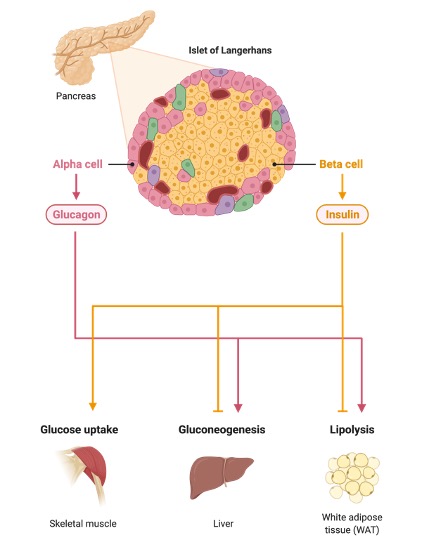Table of Contents
What is White Adipose Tissue?
Mammalian adipose tissue stores energy and functions as a thermal insulator to help maintain body temperature. Adipose tissue is a kind of connective tissue that is used to store fat (lipids). Triglycerides are the most common kind of fat stored in adipose tissue. This lipid may be destroyed later to produce energy when it is needed.
The adipose tissue also serves as a cushion and an insulator for the body. Hormones are also produced. White adipose tissue (WAT) and brown adipose tissue (BAT) are the two main kinds of adipose tissue (BAT). The white adipose tissue stores energy and functions as a thermal insulator, allowing the body to maintain its temperature.
Adipocytes in white adipose tissue are distinguished by the presence of a big fat droplet. They also have insulin, hormones, norepinephrine, and glucocorticoid receptors. Hormones such as leptin and asprosin are also produced and secreted by them.
White Adipose Tissue Metabolism
Lipolysis is increased when insulin levels are low and adrenaline levels are high. The process of lipid breakdown catalysed by enzymes, particularly hormone-sensitive lipases, is known as lipolysis.

Epinephrine from the circulation binds to the adipocyte’s beta-adrenergic receptors. The adipocyte produces more cAMP as a result of this. Protein kinase A is activated when cAMP binds to it. The hormone-sensitive lipases are activated by activated protein kinase A.
Adipocyte lipases catalyse the breakdown of triglycerides into glycerol and fatty acid, which are subsequently released into the circulation and delivered to target cells. Myocytes, for example, take up free fatty acids, whereas the liver takes up glycerol for gluconeogenesis.
White Adipose Tissue Storage
When the pancreas releases insulin into the circulation, the amount of insulin rises. This causes lipolysis to slow down by triggering a chain of events that lowers cAMP levels and diminishes sympathetic nerve outflow. Insulin also activates pyruvate dehydrogenase phosphatase, which eliminates phosphate from the enzyme and activates it to convert pyruvate to acetyl-CoA.
Through the action of acetyl-CoA carboxylase, acetyl-CoA is carboxylated to produce malonyl-CoA. In fatty acid biosynthesis, malonyl-CoA is involved in chain elongation. In humans, white adipose tissue accounts for around 20% of body weight in men and 25% of body weight in women.
White adipose tissues can be found in the kidney, mesentery, omenta, beneath the eyeball, and the hypodermis of the skin, among other places. They’re found in the blubber of elephants and whales, the hump of a camel, the fat bodies of amphibians, and the tail of Marino sheep, among other species.
White Adipose Tissue Citations
- White adipose tissue browning in critical illness: A review of the evidence, mechanisms and future perspectives. Obes Rev . 2020 Dec;21(12):e13085.
- Energy metabolism of white adipose tissue and insulin resistance in humans. Eur J Clin Invest . 2018 Nov;48(11):e13017.
- White adipose tissue mitochondrial metabolism in health and in obesity. Obes Rev . 2020 Feb;21(2):e12958.
- Brown versus white adipose tissue: a mini-review. Gerontology . 2012;58(1):15-23.
- Figures are created with BioRender.com







